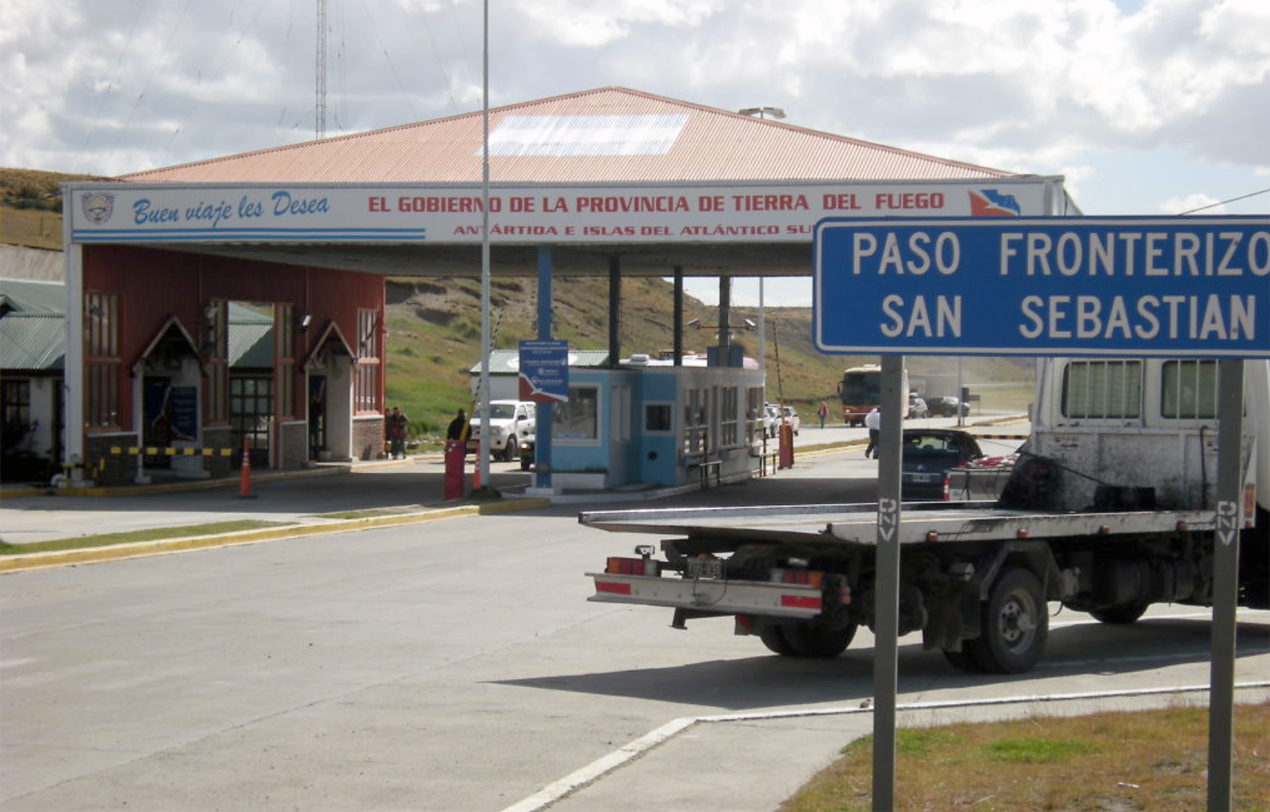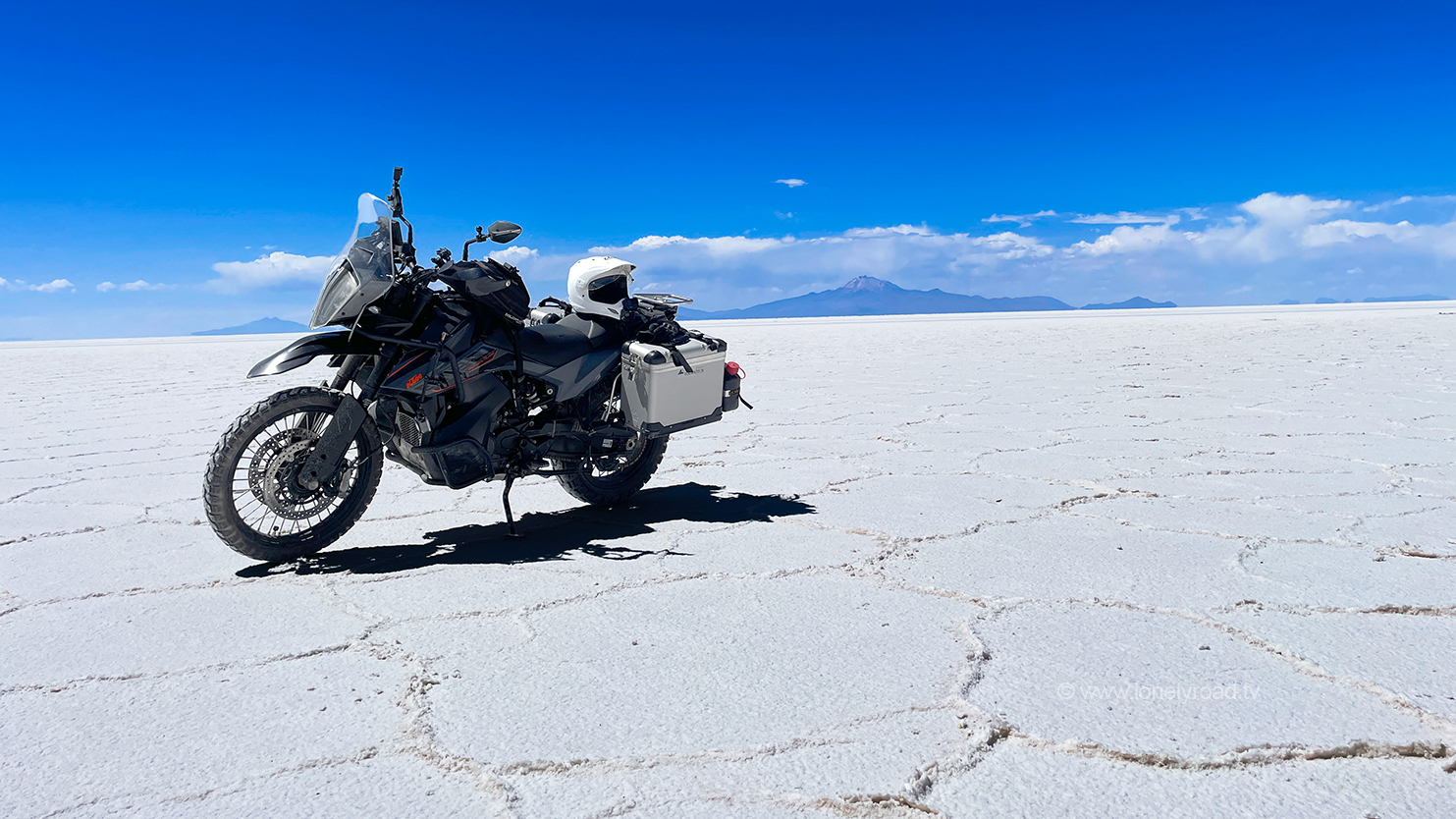Border Crossing - Paso San Sebastian, Chile to Argentina (and back)

Crossing Date: 31 December 2023
Direction: Argentina to Chile (and back)
Altitude: 0m
Vehicle: UK-registered motorcycle
People: 1
Total time: 1 hour
Rating: 5/5 (smooth)
Paso San Sebastian is the main and only paved crossing between Argentinian and Chilean Tiera del Fuego. Most travellers use it on their way to the end of the road at Ushuaia in Argentina. And as there’s nowhere to go from there, it’s often a return through San Sebastian on the way back to Chile.
The Process
The San Sebastian crossing is fairly remote in the sense it is not near any major town. On the Chilean side, it’s a two-hour plus drive from Porvenir, partially on gravel. Coming from Argentina via Paso Integración Austral is around 215km on sealed roads, and includes a short ferry crossing.
At the border, the facilities for each country and housed in separate buildings, separated by about 14km of no-man’s-land, mostly on the Argentinian side. Coming from Chile, the brand new sealed road drops you at a small building where you complete the exit procedure for Chile – immigration and customs (cancelling the temporary import permit for the bike). You’re given a small slip of paper which is stamped by both functions to show you’ve completed the process. You can then proceed to the Argentinian facility.
The road between both posts is now sealed all the way, but the Argentinian side, which represents most of it, has several potholed sections. The Argentinian buildings are more run down than their Chilean counterparts and include several disused booths. To complete the entry procedure for Argentina, you need to park and enter the building on the right. Entry is the standard two-part process: immigration and customs (creation of the temporary import permit for the vehicle). You’re also given a separate slip of paper, similar to the Chilean one, which is stamped as you complete the two processes.
With stamped slip, you then return to your vehicle and proceed, showing the slip to a border official in one of the small booths where you’re given the green light to continue into Argentina.
The return journey is pretty much the same process in reverse. On the Argentinian side, there is a separate building on the other side of the road (right side) where you complete the exit procedures, before showing your stamped slip to the official and proceeding. Formalities on the Chilean side are completed in the same building you used when you exited Chile.
As mentioned, both border posts are fairly remote. The only thing on the Chilean side is the Hosteria La Frontera (hotel and restaurant) and the nearest petrol station is 120km away in Cerro Sombrero. On the Argentinian side, there is an ACA hotel next to the border post and a small YPF petrol station. Rio Grande is the nearest significant town, around 80km south of the border.
How it Went for Me
After staying at the excellent Hosteria La Frontera on the Chilean side the night before, it was a short ride down the road to the border. The Chilean building is reasonably small, but unmissable as it straddles the road. Not much thought seems to have been given to parking, as there is little space and plenty of no parking signs. This didn't pose a problem for my motorcycle - I just pulled into a small open area right next to the building. Drivers of larger vehicles may need to park further away.
Being first thing in the morning, the border facility was virtually empty. Immigration exit formalities and cancelling the Chilean TIP for the bike took all of about 10 minutes. It then took around 15 minutes to ride the 14kms of no-man's-land to the Argentinian side. The location of the actual border is very obvious as the quality of the road surface changes sharply as you cross.
Arriving at the Argentinian facility, it was initially a little confusing as to where to go. There are several 'toll booths', not all of which are staffed, but you actually need to do the formalities in the main building on the right. It was still fairly early, as there were only a handful of people ahead of me inside. Getting stamped into Argentina and issuing the new TIP for the bike took around 15 minutes. As I'd parked right outside the building, I then walked over to the toll booth to show my stamped slip the official and was waved on into Argentina.
A couple of days later on my return from Ushuaia, I repeated the process in reverse. Being later in the day, the main difference was that both border posts were considerably busier. On the Argentinian side, there was a moderate queue, so exit formalities took around 30 minutes. Once I'd returned to my bike, it wasn't clear where to proceed. Most of the toll booths were closed, so I lined up behind a couple of trucks, but was ignored by the officials. After a little while, another official waived me ahead of the trucks and through the border post. My stamp slip wasn't checked.
The facility on the Chilean side was unsurprisingly equally busy. Again, no thought given to parking so cars and bikes were just lined up on the side of the road ahead of the building. With queuing, the Chilean process also took around 30 minutes. As with other border crossings, I completed the Chilean Agricultural Customs declaration online ahead of time, so I was able to just show the reference to the customs officer along with my stamped slip. Then it was a typically cursory look in my paniers, and I was on my way.




